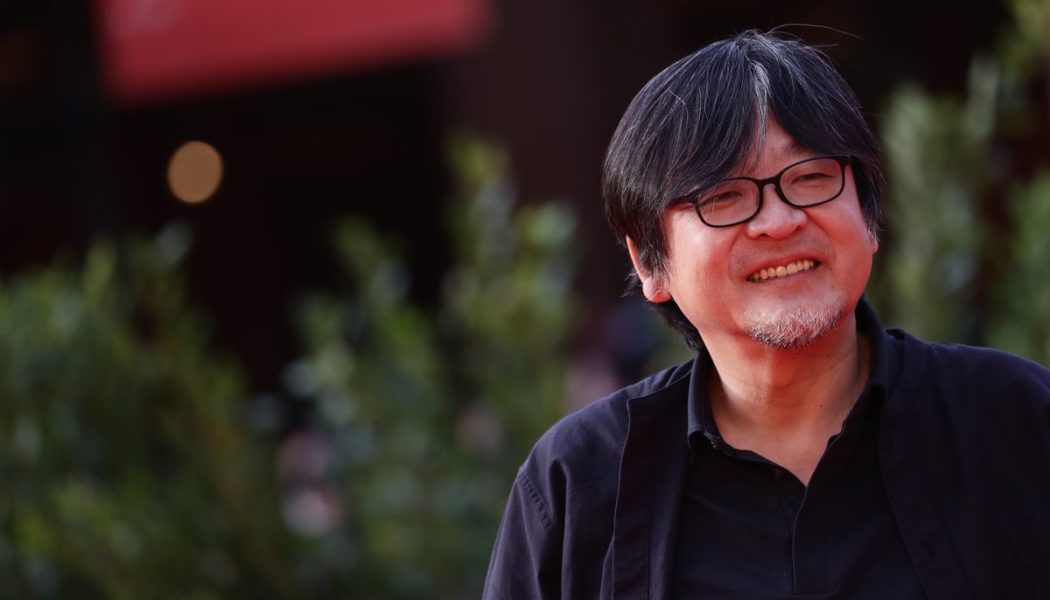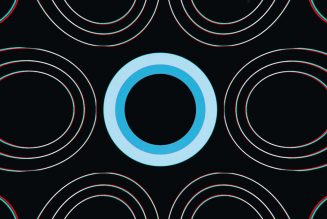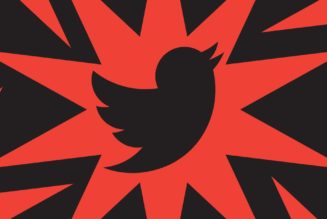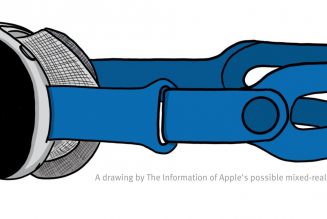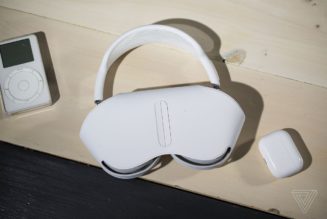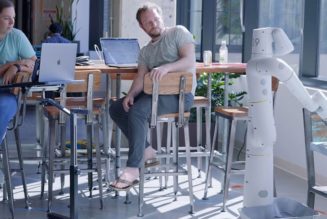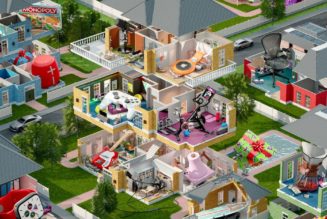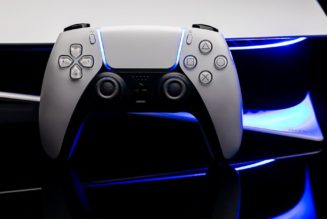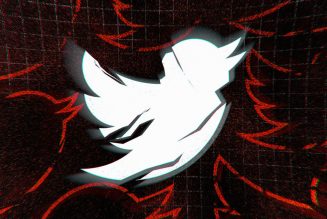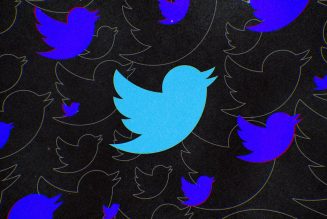When I sat down to chat with director Mamoru Hosoda over Zoom last November, it had only been a few weeks since Facebook had announced its name change, and everyone seemed to be talking about the metaverse. Hosoda, meanwhile, was promoting his latest film: Belle, a modern reinterpretation of Beauty and the Beast that just so happened to be set in a metaverse-like virtual world. “I certainly didn’t expect Facebook to change their name during our promotional campaign,” he says.
Hosoda is perhaps best known for his 2018 anime Mirai, which was nominated for best animated picture at the Academy Awards. But he’s also been exploring the idea of virtual worlds for quite some time. He got his start directing with a pair of Digimon movies, and in 2009 he released Summer Wars, in which a rogue AI wreaks havoc on a virtual world. “That dynamism and excitement that surrounds this idea of the internet really caught me,” he says of his initial attraction to the subject matter.
The internet has become virtually unrecognizable in the two decades since Digimon Adventure debuted, and that’s evident in Belle. The film uses its classic inspiration as a way of exploring the dual lives people often live online, starring a shy young girl from a small village who becomes a world-famous singer inside of a sprawling virtual space known as U. (In a meta twist, you can follow her avatar on Instagram.)
It’s a clever take on Beauty and the Beast — there’s also a mysterious, monstrous figure who is more than they seem — but more than that, Belle is a poignant story about our always-online culture, tackling difficult subjects like cyberbullying. And for Hosoda it was a chance not only to update a fairy tale he long admired, but also to update his vision of what a global virtual world might one day look like. U is an almost overwhelming space filled with skyscrapers and the avatars of a staggering 5 billion users, which has become the kind of virtual town square that Jack Dorsey could only dream of. Think of it like Times Square crossed with a round of Fortnite, and you’re almost there.
With Belle coming to theaters in the US this week, here’s my conversation with Hosoda about the movie, the evolution of his ideas about the internet, designing the virtual realm U, and where the metaverse might go from here.
:no_upscale()/cdn.vox-cdn.com/uploads/chorus_asset/file/23144270/1346903479.jpg)
This isn’t your first time tackling these subjects and themes. What is it that keeps you coming back to stories about virtual worlds and the internet?
I recall creating movies that have to do with the theme of the internet all the way back to about 2000, with Digimon Adventure: Our War Game. And I was fascinated by this idea that something aside from our own reality, these big events or phenomena that occur in this space can in some way, shape, or form affect our reality as we understand it. At the time the internet seemed like this very young space that was for a younger generation, and I felt like it had this almost hope of younger kids breaking these old values that we had and creating a new world. That dynamism and excitement that surrounds this idea of the internet really caught me.
A lot has happened in the last 20 years with the way the internet functions, and a lot of these things that were science fiction then are now becoming reality. How have your feelings about the space changed? Do you have the same sense of optimism?
Certainly the internet has changed massively in the last 20 years. One of the biggest changes, or shifts, I believe is this idea that we all interact with the internet in some way. Regardless of your age group or demographic, the internet affects your life. Because of that, our reality, and this other reality that exists in the internet world, have become much closer in the last 20 years than it was when the internet was much younger. We’ve carried a lot of our issues into the internet space; the toxicity, a lot of negativity. Because of that a lot of parents say, “Well the internet is bad” and they might take their kid’s iPad away and say, “We don’t want you on the internet.” But it’s not necessarily the internet that’s bad, I believe, it’s some of the more negative sides of us as a species that has manifested itself in this space. The issue isn’t so much the internet but us as humans, and how this anonymity changes us and changes behavior.
But in spite of this, I think some elements of the internet remain unchanged, and this idea that the younger generation is always going to find a new way to take advantage of it to innovate and push the status quo further. I think there’s still some hope there.
With Belle, what was the starting point? Did you want to explore this topic again and the Beauty and the Beast story fit well, or did you start with reinterpreting the story and this metaverse concept came from there?
I always admired the story of Beauty and the Beast, even when I was much younger. So I would say the idea of reinterpreting Beauty and the Beast came first. What really fascinated me about this story is how the values seemed to be inverted in some ways; what we think is pretty turns out to be ugly, and what might look ugly turns out to be quite beautiful on the inside. I’ve wanted to make my interpretation of Beauty and the Beast for 30 years now. It took me 30 years to do it, but we’re finally here.
In terms of how to tell that narrative, I realized this idea of the internet really worked well with the concept of Beauty and the Beast in that they both share this duality in some sense. In Beauty and the Beast, the beast obviously has this very vicious and violent-looking exterior, but what’s inside is quite different. In a similar way, with the invention of the internet, we as people have the version of ourselves that exists in reality and another projection that exists in the internet. So there’s a similar duality happening, and I thought that would allow the narrative, and a lot of those themes, to work and come forward.
[embedded content]
So what was the hold up? Was it just finding the right way to tell this story?
In some of my past works, I did try to explore certain concepts from Beauty and the Beast, but this is the first time I really consciously took it to this level and said, “This is a direct inspiration.” Take, for example, Wolf Children, where we have a wolf man falling in love with a woman, or more recently Boy and the Beast, which is sort of like a Beauty and the Beast story told through a father and son. I think there have been a few iterations in my filmography where I try to explore the issue, but I would say this is the first time I really went for it.
Another reason why it took 30 years is that a lot of the shifts that happened around us in the world — we can go back to Disney’s interpretation from 30 years ago, or trace it back even further to 1946 when Jean Cocteau did his interpretation, or back even further to the original works — there have been a lot of changes in our society, and I felt the interpretation had to be similarly updated for a different audience and a different social context. The definition of beauty for me seemed much different if you trace it back to the original work, which was a very specific idea of beauty and a very male-dominated perspective. There seemed to be only a few ways that women could check all of the boxes of what it meant to be beautiful.
In Disney’s version 30 years ago, I think they really explored the idea of the duality of the beast. But today, I think that duality goes further and applies very much to this concept of beauty where the protagonist has to overcome certain obstacles to gain strength and almost feed strength to herself, and in many ways the way that she exerts this strength is in and of itself a very beautiful sight.
With U, the virtual world in the movie, what was it like figuring out how that would look and function? Were you aiming for something that felt plausible, that viewers could relate to with all of the tech they use in their lives, or were you going for something more futuristic and sci-fi?
In the last 20 years, I think the internet has certainly changed a lot, and if you look at some of my earlier movies — Digimon in 2000 and Summer Wars in 2009 — when trying to visually express what’s inside this concept of the internet, I chose a much more white backdrop with a lot of colors that popped. It felt very inviting, it felt very vast and incomplete, like it was the frontier. A blank canvas, if you will. It wasn’t a space just for boys, it was open to women, younger generations, anyone who had something to contribute.
But, as we talked about before, the internet has shifted quite a bit and become much closer to reality. So when thinking about how to express that, capture that in a visual medium, we ended up with what you see in U, which is this space that doesn’t necessarily have an up or a down, a left or a right. It’s packed with these skyscraper-like structures. It feels a little more cramped. Not quite as open as it did in my previous films. It really feels like the center of this world, and it’s hard to tell where the horizon starts and where it ends. That was the visual translation of what I felt the internet has evolved into.
Is that how you feel when you go on the internet? Just overwhelmed?
I perhaps don’t feel as excited as I did once upon a time, when I’d go on the internet to search for something and there was this sense of discovery or finding something new that I haven’t felt in a long time. It certainly has lost that sense of being a frontier, or this really vast open space, though perhaps the metaverse will fill that void and become the new frontier. I do feel a little sorry for the younger generations because it is unfortunate that there isn’t as much of a frontier, and there needs to be some kind of revolution, I suppose, in the internet space for these generations to continue to push innovation and the status quo.
:no_upscale()/cdn.vox-cdn.com/uploads/chorus_asset/file/23144277/BELLE_Image04.jpg)
When you look at these metaverses or virtual worlds — the ones that exist now or the ones that companies are talking about building in the future — they’re always very commercially driven. They’re plastered with ads and things to buy. There’s not a lot of that in U, aside from some mentions of sponsorship. I’m curious if that was intentional, and why you decided to go in that direction?
The internet is in many ways this new global world, and I think it is a representation of what a global world might look like, where languages and borders don’t play as much of a role anymore. U is intended to really capture that sensibility.
But in some ways this idea of a true globalized internet space, I question if it’s really possible, and that ties into the commercialism of it. Right now, the internet is really heavily influenced by Google, Amazon, Facebook, and Apple, the mega-corporations. They are global corporations in many ways, but at the same time they are very much Western, or US-based, companies that are managing what direction the internet is going. I do believe that we need some kind of entity or space or reality that can transcend the needs of the corporation.
Even in U, the social media icons were part of this new U-verse. The various social media networks or corporations are then part of this platform, not the ones creating it. I do believe that leap needs to happen for us to have this globalized world that we envision.
What has it been like promoting this movie about a global, virtual world and seeing all of those companies you just talked about saying, “We want to build one of our own”?
I certainly didn’t expect Facebook to change their name during our promotional campaign. In some ways, I was trying to depict something that was slightly in the distance, but what seemed like fiction is very much becoming a reality. That shift is certainly quite interesting that it’s happening in real time, as this movie is propagating throughout the world. I think there is still a little ways to go in order to immerse yourself in a world without VR glasses, there’s still a bit of a gap, but I think the future seems to be headed in that direction. Perhaps a lot of the issues that were raised in the movie will come into play as we continue to make this transition. So hopefully it will speak to the audience in that way as we move into the next phase of the internet.
Belle will be screening in select IMAX theaters in the US on January 12th, before opening up more widely on January 14th.
